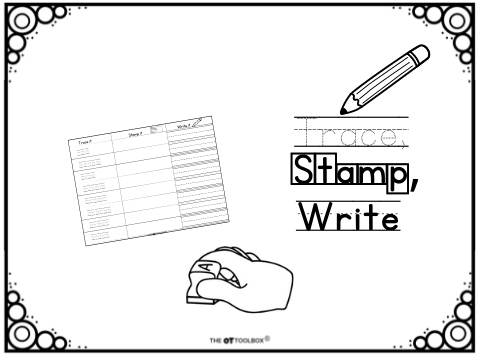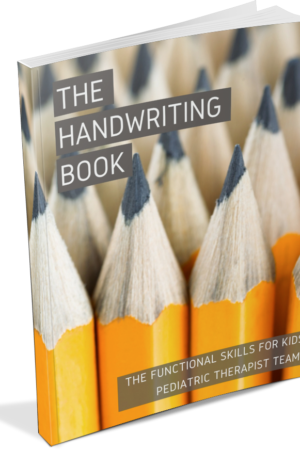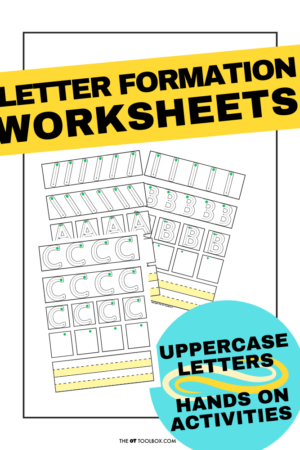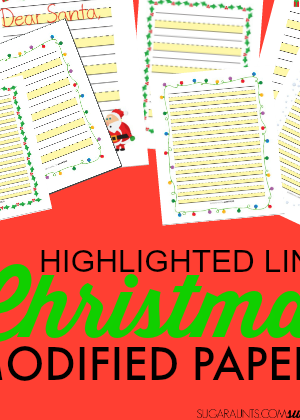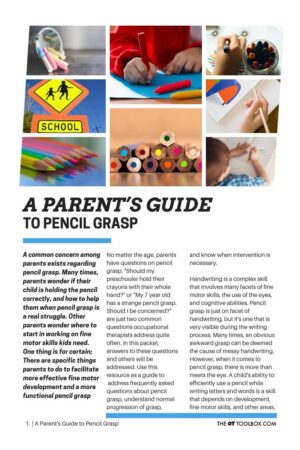Multisensory Writing Sheets
$3.00
If you faced with a group of reluctant writers, Multisensory Writing Sheets may help! Teaching a multi-modal plan for writing will not only motivate less than enthusiastic learners, it helps embed important information quicker and easier.
Everyone has a different learning style; auditory, visual, kinesthetic (hands on), demonstration, imitation, or repetition. Activities like these Trace, Stamp and Write worksheets provide for the learning style of multiple different students while offering multi sensory learning opportunities.
Description
This set of three different multisensory writing sheets includes starter words such as shapes and colors, and a blank worksheet to customize your lesson plan.
- Step one: writers trace the printed words. This can be done with pencil, markers, highlighters, crayons, or dry erase pens. Tracing will be more effective if learners understand the words and letters they are writing.
- Step two: learners use alphabet stampers to form the words they are working on. Amazon has several different sets to choose from, or buy from your favorite supply store.
- Step three: learners write the words they have practiced on the lines. These written words can be done with different writing tools also. Colored pencils, pens, markers, dry erase pens, or traditional pencils are great. While writing tools other than traditional pencils are not erasable, sometimes they are the exact motivation a child needs!
Ways to modify this task:
- Use the spelling words for the week to reinforce them
- Have learners practice writing their names with this sheet
- Practice sight words with this worksheet
- Laminate the page for reusability. This saves on resources, and many learners love to write with markers! Note: some children love to use wipe off sheets, while others become upset that they can not take their work with them. For those who want to save their work, consider taking a screenshot of it.
- Make this part of a larger lesson plan including gross motor, sensory, social, executive function, or other fine motor skills
- Enlarging the font may be necessary to beginning handwriting students who need bigger space to write.
- Project this page onto a smart board for students to come to the board and write in big letters.
- Velcro the back of the alphabet letters, after laminating and cutting it, to create a matching/fine motor task
- Have students write on a slant board, lying prone on the floor with the page in front to build shoulder stability, or supine with the page taped under the table
What to look for when assessing/documenting this task:
- The percentage of correct letters
- How many letters are formed correctly, in the right direction, and legibly?
- Accuracy of tracing on the lines
- Placement of stampers in #s or %
- Line placement, spacing, sizing
- Grasping pattern, hand dominance
- Attention to detail, following directions, prompts and reminders needed, level of assistance given
- Bilateral coordination, using the helper hand to stabilize the paper
- How many times do you need to repeat the directions so your learner can follow them?
- How many reminders does your learner need while doing this activity?
- First determine what goals and skills you are addressing. Are you looking strictly at letter formation, tracing, and alphabet recall? Or something else entirely such as executive function and behavior?
- Use specific data to back up your documentation. Percentages, number of trials, number of errors, exact sizing, how many letters were written incorrectly, number of reversals, number of prompts, minutes of attention.


